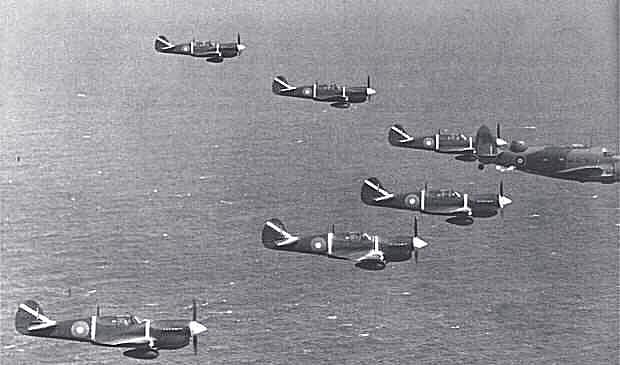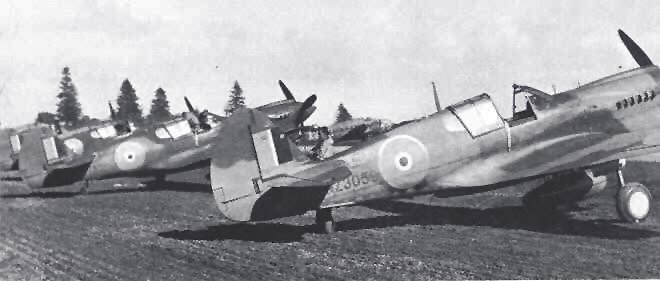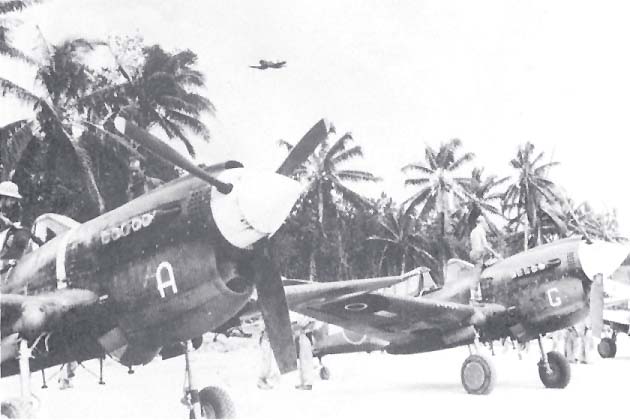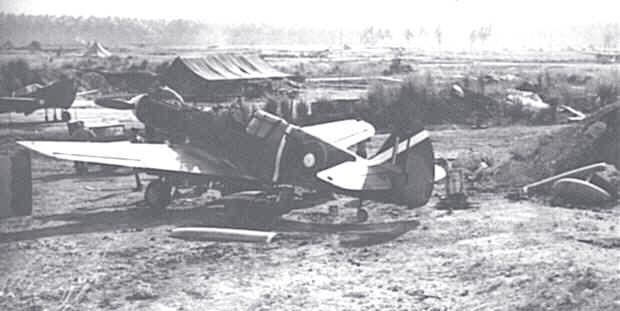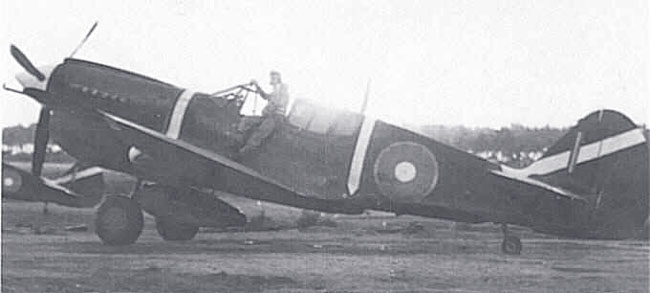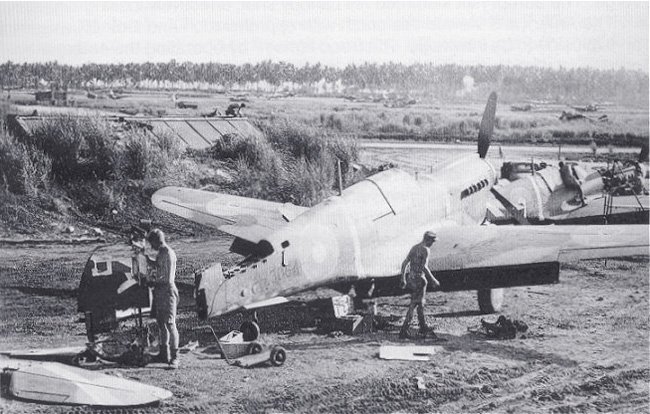|
The P- 40 enters combat. The first RNZAF Kittyhawks to see combat were those of 15 Squadron, now equipped with P- 40K's and M's, which joined the Battles over Guadalcanal during the heaviest fighting there during April 1943. To
reach the operational area, the aircraft were flown from New Zealand
via Norfolk Island, New Caledonia, Espiritu Santo, then on to Henderson
Field on Guadalcanal.
The first RNZAF fighter victory in the South Pacific was a floatplane downed on May 6th by two 15 Squadron aircraft escorting a patrolling RNZAF Hudson. 15 Squadrons' first large scale action took place on June 7th, just south of the Russell Islands. In atrocious weather, the first 'Zero' fell to Sgt. R.A.Martin, and three others fell to the guns of other members in the flight of 12 aircraft.
After a three month operational tour, the remaining aircraft were taken
over by 14 Squadron for their tour of duty, and 15 Squadron withdrew
from Guadalcanal on June 22nd.
14 Squadron had no time to settle in as they went into action on the day after their arrival on June 11th.
On the 12th, they,
along with American aircraft were scrambled to intercept an attacking force
of 120 Japanese fighters and dive bombers. 14 Squadron scored six enemy aircraft
for the loss of one of theirs.
During
July they covered the American landings on the New Georgia Islands,
and the 'Rendova Patrol' as it became known, adding to their score
on July 1st with claims of 7 destroyed and three probables for the
loss of 2. One pilot again surviving a ditching to be picked
up by a patrol boat.
After many patrols over the New Georgia group, 14 handed over it's duties to 16 Squadron on July 25th, and pulled back to Santo. After a few days spent on local defence duties, they returned to New Zealand.
16
Squadrons' two month tour consisted of similar tasks to those 14 Squadron
had carried out, fighter patrols, escorts for American bombers, ground
strafing, intercepting enemy air raids, and attacking any enemy shipping
in the area. A record 2100hrs were flown at this time, of these, 1260
were flown during August.
17 Squadron relieved 18 Squadron on September 12th, and the latter returned to NZ for leave several days later. 17 Squadron were soon joined by 15 Squadron returning for their second tour, both units being heavily involved with the American landings on the central Solomon Islands. Most of their sorties consisted of escorting American bombers to targets on Bougainville.
|
